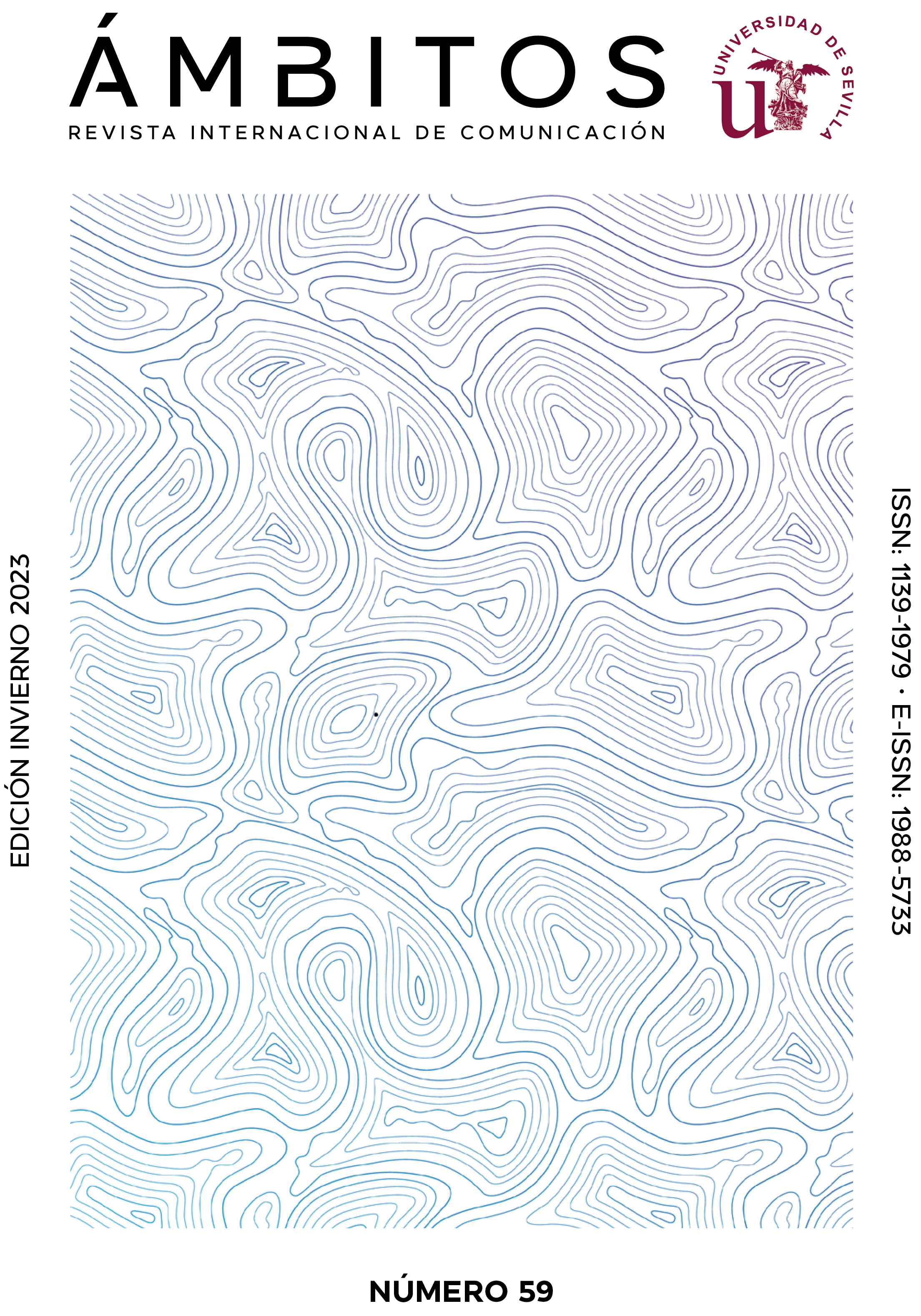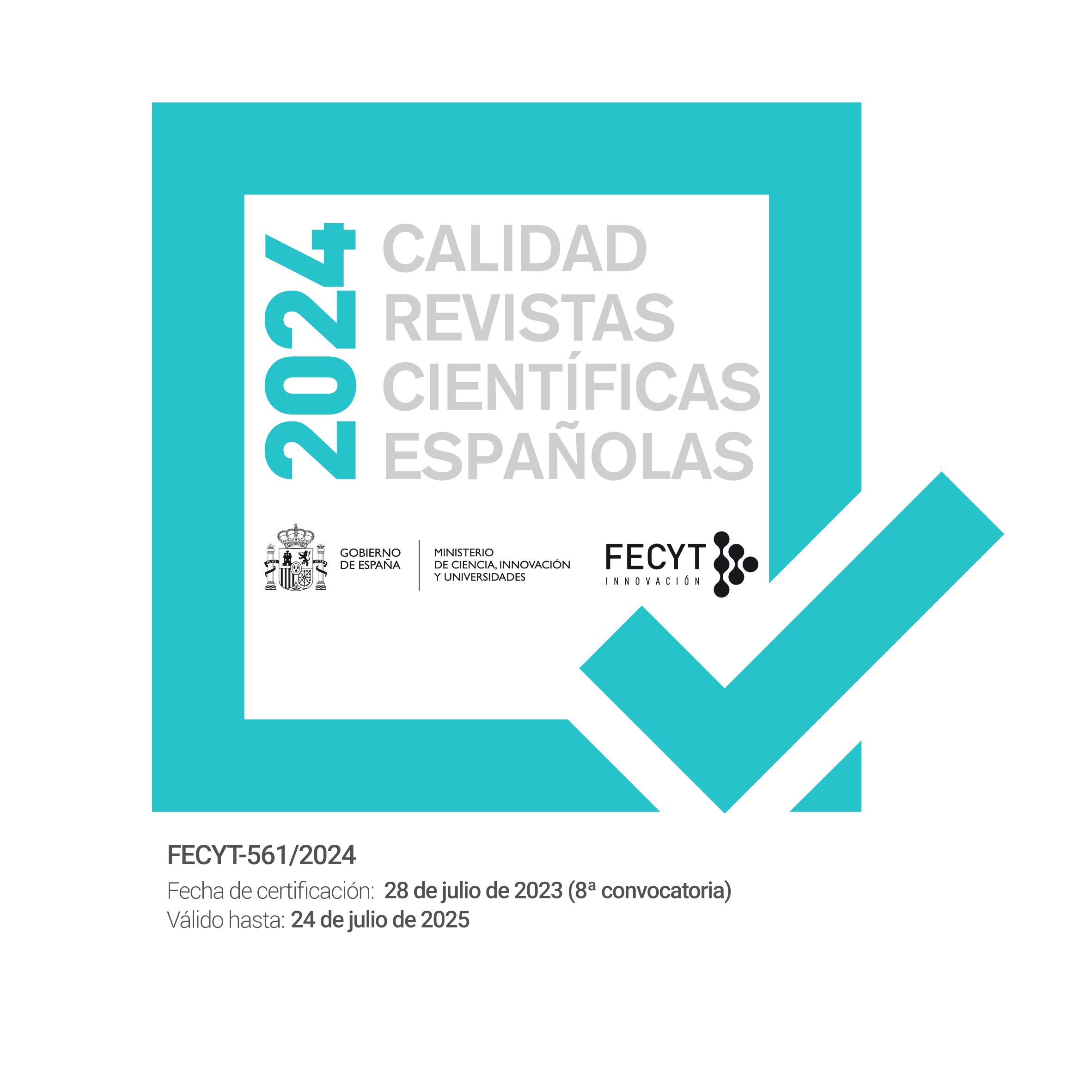Shifting italian masculinities: insights from three male performances in festival of sanremo 2022
DOI:
https://doi.org/10.12795/Ambitos.2023.i59.06Palavras-chave:
masculinity, gender performance, Sanremo, media studies, gender studiesResumo
The Festival of Sanremo is arguably one of the biggest events on Italian television in terms of audience and prestige. It sits within complex socio-cultural dynamics and can be understood only through a lens that focuses on the ecology of Italian media and values songs as cultural objects (Tomatis, 2016). Indeed, acts happening on Sanremo’s stage can acquire a special significance in terms of their potential resonance (Facci et al., 2011) and the festival has often been used to spread political messages or raising awareness about social issues. In recent years, the festival has featured singers whose performances and character increasingly challenge and complicate traditional expressions of gender, with mixed, often polarized, receptions. The artistic choices of Amadeus (host of the 2019 through 2024 editions) and the authors reflect the trend of assimilation into the mainstream of queer or otherwise gender-defying signifiers in audiovisual pop productions (Ferrante, 2019). To zoom in on these processes, we draw our attention to performances of masculinities (Butler, 1990 & 2004; Connell, 2020; Feasey, 2008; Reeser, 2011) in the context of the 2022 edition of Sanremo. We will operate a visual analysis (Aubrey & Frisby, 2011; Russmann & Svensson, 2016; Tiindenberg & Baym, 2017) of the opening performances of three male artists, identifying three different ways of performing masculinity on the stage: Rkomi, Achille Lauro and Michele Bravi.
Downloads
Referências
Aubrey, S. A. & Frisby, C. M. (2011). Sexual Objectification in Music Videos: A Content Analysis Comparing Gender and Genre. Mass Communication & Society, 14, 475-501.
https://doi.org/10.1080/15205436.2010.513468
Bennato, D. (2018). L’emergere della disinformazione come processo socio-computazionale. Il caso Blue Whale. Problemi dell’informazione, 3, 394-419. http://www.rivisteweb.it/doi/10.1445/91659
Boni, F. (2004). Men’s help. Sociologia dei periodici maschili. Meltemi.
Budoni, C. (2021). Fluidità visibile per addomesticare un pubblico. Il caso dei quadri di Achille Lauro a Sanremo 2021. Rivista interdisciplinare di comunicazione, 3, 177-182.
https://doi.org/10.15162/2704-8659/1305
Butler, J. (1990). Gender Trouble: Feminism and the Subversion of Identity.
Routledge.
Butler, J. (2004). Undoing gender. Routledge. https://doi.org/10.4324/9780203499627
Ciccone, S. (2020). Maschi in crisi? Una strada oltre la retorica della frustrazione e del rancore. Rosenberg & Sellier. https://doi.org/10.4000/books.res.2760
Connell, R. W. (1995). Masculinities. University of California Press.
Dell’Agnese, E. (2007). Tu vuo’ fa l’Americano: la costruzione della mascolinità nella geopolitica popolare italiana. In E. Dell’Agnese, & E. Ruspini (A cura di). Mascolinità all’italiana. Costruzioni, narrazioni, mutamenti (pp. 3-34). Utet Libreria.
Devoto, G. & Oli, G. C. (2021). Mascolinità. In L. Serianni, & M. Trifone (A cura di). Nuovo Devoto Oli (pp. 302-304). Mondadori.
Di Franco, G. (2017). Tecniche e modelli di analisi multivariata. Franco Angeli
Facci, S., Piloni, M. & Soddu, P. (2011). Il festival di Sanremo. Parole e suoni raccontano la nazione. Carocci.
Feasey, R. (2008). Masculinity and popular television. University Press.
https://doi.org/10.1515/9780748631797
Ferrante, A. A. (2019). Pelle queer maschere straight. Il regime di visibilità omonormativo oltre la televisione. Mimesis.
Gilmore, D. D. (1990). Manhood in the making: Cultural concepts of masculinity. University Press.
Green, J. N. (2007). Doctoring the National Body: Gender, Race, Eugenics, and the «Invert» in Urban Brazil, Ca. 1920-1945. In: W. E. French & K. E. Bliss (A cura di). Gender, Sexuality and Power in Latin America since Independence (pp. 187-211). Rowman & Littlefield.
Lorber, J. (1995). L’invenzione dei sessi. Il Saggiatore.
Maccoby, E. E. & Jacklin, C. N. (1974). The psychology of sex differences. University Press.
https://doi.org/10.1515/9781503620780
Mattioli, F. (2007). Le tecniche di analisi visuale. In: L. Cannavò & L. Frudà (A cura di). Ricerca sociale. Tecniche speciali di rilevazione trattamento e analisi (pp. 153-171). Carocci.
Nentwich, J. C. & Kelan, E. K. (2014). Towards a topology of ‘doing gender’: An analysis of empirical research and its challenges. Gender, Work and Organization, 21(2), 121-134.
https://doi.org/10.1111/gwao.12025
Reeser, T. W. (2011). Masculinities in theory: An introduction. John Wiley & Sons. https://bit.ly/3HniyXq
Ruspini, E. (2003). Le identità di genere. Carocci editore.
Russmann, U. & Svensson, J. (2016). Studying Organizations on Instagram. Information, 7(4), 58.
https://doi.org/10.3390/info7040058
Thompson, J. B. (1990). Ideology and Modern Culture: Critical Social Theory in the Era of Mass Communication. University Press.
https://doi.org/10.1515/9781503621886
Tiidenberg, K. & Baym, N. K. (2017). Learn it, buy it, work it: Intensive pregnancy on Instagram. Social Media+ Society, 3(1).
https://doi.org/10.1177/2056305116685108
Tomatis, J. (2016). I ragazzi di oggi e la nostalgia canaglia. Il Festival di Sanremo, i media e la canzone italiana. Bianco e nero. Rivista quadrimestrale del centro sperimentale di cinematografia, 585, 83-93.
https://bit.ly/3VH2aoQ
Downloads
Publicado
Como Citar
Edição
Seção
Licença
Copyright (c) 2023 Carlotta Antonelli

Este trabalho está licenciado sob uma licença Creative Commons Attribution-NonCommercial-ShareAlike 4.0 International License.
Ámbitos. Revista Internacional de Comunicación é um jornal de acesso aberto, o que significa que todo o conteúdo está disponível gratuitamente para o usuário ou sua instituição. Os usuários podem ler, baixar, copiar, distribuir, distribuir, imprimir, pesquisar ou vincular ao texto completo dos artigos, ou utilizá-los para qualquer outra finalidade lícita, sem solicitar permissão prévia da editora ou do autor. Esta definição de acesso aberto está de acordo com a Iniciativa de Acesso Aberto de Budapeste (BOAI).

A menos que seja observado o contrário, todo o conteúdo da edição eletrônica é distribuído sob uma "Licença Internacional Creative Commons Attribution-NonCommercial-ShareAlike 4.0". Você pode consultar a versão informativa e o texto legal da licença aqui. Isto deve ser expressamente declarado desta forma, quando necessário.
No caso de aceitação do manuscrito, os autores cedem os direitos da obra para sua publicação à Ámbitos. Revista Internacional de Comunicación sob o contrato de licença Attribution-NonCommercial-ShareAlike 4.0 International (CC BY-NC-SA 4.0). Os autores retêm os direitos autorais e terceiros estão autorizados a copiar, distribuir e fazer uso da obra, desde que cumpram os termos e condições estabelecidos na licença
- Cite a autoria e a fonte original de publicação (revista, editora e URL da obra).
- Não utilizá-los para fins comerciais.
- Se você remixar, transformar ou criar a partir do material, você deve liberar suas contribuições sob a mesma licença que o original.
Mais informações podem ser encontradas em
https://creativecommons.org/licenses/by-nc-sa/4.0/deed.es


















